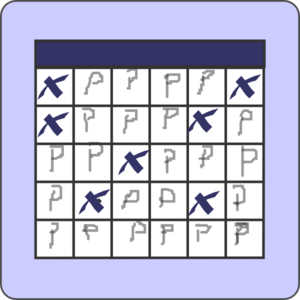Before I give a list of tips for making homeschooling fun (in another post), I want to address something that definitely keeps homeschooling from being fun--for parents--but even for the kids too (eventually!). This concept is one of indulgent homeschooling vs fun homeschooling.
Just like our children "don't like" this or "don't want" that or "have to have" this or "can't be happy without" this--and thus, are often not happy with the "normal" things of life--so it is with our children in homeschooling.
Before I come off sounding like an ogre, I want to assure you that we had a fun homeschool. If you were to ask our children (seven of them ages fifteen through thirty) if our homeschool was fun, you would hear answers like the following:
"Oh yeah! Dad used to use these huge red pressboard bricks to teach Bible stories. We would build the temple, Zacheus' tree, and even Jesus' boat!"
"Fun? How many kids do you know who got to sleep at the top of the jungle gym at Science Central overnight---WITH their parents!"
"I can't imagine more fun than having your mom read to you for two hours every morning and two hours every afternoon. School was definitely fun at our house!"
"It was a blast! When Mom and Dad got us new books and other fun things from the homeschool convention, they would wake us up at midnight when they got home and show us everything and start reading them to us!"
However, one reason that our children found homeschooling fun was because everything didn't always have to be fun. Just like an indulgent child can't be happy unless she gets to have a friend overnight, order pizza, and buy new make up to do make-overs often, a homeschooled child will not think school is fun if he has to have fun all the time. I call this the fun factor in homeschooling.
So, strange as it may seem, my first suggestion to making school fun and helping your kids love learning and love homeschooling is to not try to make
everything fun.
Our kids knew fun times were coming. They knew that Mom and Dad loved learning and loved homeschooling and would make things fun at times. They knew that we had something fun up our sleeves to pull out any time.
But they also knew that school was their occupation--and it was often just plain hard work sometimes. And it needed to be done. Day in and day out. Just like Dad went to his job and worked his tail off--so Mom and the kids do the same at home.
We didn't need to have bells and whistles all the time because they began to love normal (just like their parents did---hint hint--modeling!). They always knew the expectations, and they knew that every day they had to get up and follow a routine for learning, growing, becoming, and maturing.
They learned the joy of following a routine, setting goals and meeting them, completing tasks, and of gaining knowledge.
They knew that there were many things we do just because they are the right things to do. Every subject, every day doesn't have to be fun. Chores don't always have to be games and contests--or rewarded (though sometimes they were!).
We taught them a contentment in homeschooling--in our way of life---that made the fun even more fun, the special even more special, and the extraordinary even more extraordinary.
The Fun Factor in Homeschooling--the fun begins when the normal is good too.





.jpg)





